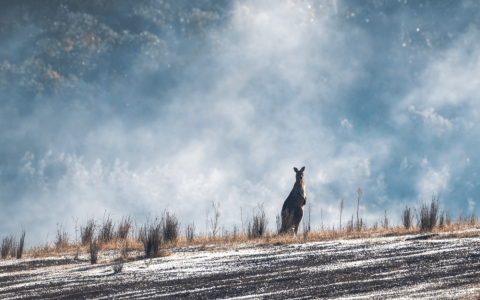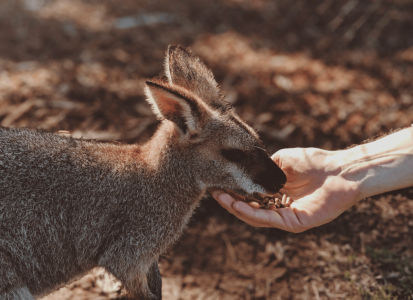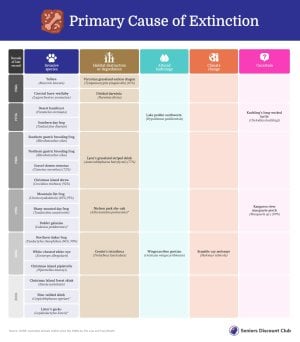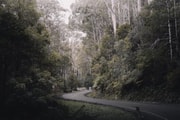The shocking truth behind the surge of Aussie animal extinctions: Are we losing control?
- Replies 12
In today's fast-paced world, it's easy to get distracted by the numerous technological advancements and social changes that have come to define the modern era.
After all, just in the last 60 years, we've witnessed incredible achievements such as our first steps on the moon, the invention of the internet, and monumental strides in terms of rights for minorities, women, and even animals.
However, it's important not to overlook some of the more concerning developments taking place right on our doorstep, especially when it comes to the alarming rate of animal extinctions seen in Australia in recent decades.
Since the 1960s, an estimated 23 animal species have been wiped out of their home in Australia – a figure that's surely a cause for concern.
While many may instinctively point the finger at the nation's rampant land clearing and habitat destruction issues, surprisingly, this is not the main cause behind such extensive loss.

According to a recent report by the Invasive Species Council (ISC), 17 of these extinctions can, in fact, be attributed to the impact of invasive species.
With our globalised society and increased mobility of people and products, ISC warns that Australia may not be sufficiently prepared to deter a potential epidemic that could annihilate many more of our cherished native species.
'Mobility of people and products is accelerating madly — it's getting out of control,' warns report author Tim Low. 'Look at the way COVID-19 jumped out of nowhere and took over the world. That can happen with any kind of disease affecting any kind of plant or animal.'
To grasp the severity of the situation, let's take a closer look at some of the animals we've sadly lost since the 1960s. Among the 23 total probable wild extinctions, three species still exist but have completely vanished from their original wild habitats.
Does this mean we should completely disregard habitat loss as a factor in their extinction? Absolutely not, states Mr Low.
While habitat loss remains a significant threat to numerous iconic Aussie species – such as the koala, which was listed as endangered in 2022 – Mr Low argues that a focus on biosecurity measures is vital in preventing further extinction.
Australia currently faces several areas of concern in regard to invasive species, including risks associated with bird flu and the illegal importation of crayfish. Such invasions not only endanger animals but also threaten the vitality of entire plant species, with 16 types of plants across NSW and Queensland reportedly at immediate risk of extinction due to invasive pathogens.
However, it's not all doom and gloom. By working to rebalance our focus on biosecurity and implementing sufficient protection measures for agriculture and our vulnerable flora and fauna, we may still have a chance at preserving Australia's unique biodiversity.
In order to have a chance to do that, we must be prepared for the challenges posed by invasive species and other factors like climate change, which Mr Low predicts will become the primary driver of extinction by the end of the century.

As Aussies, we must work together to raise awareness about the significant threats facing our native wildlife and to advocate for measures that help protect our unique ecosystems.
Through education, action, and maintaining an unwavering focus on the issues at hand, we can take control of this situation and help ensure the survival of the incredible array of plant and animal life that makes Australia so unique and special.
Remember, it's not just up to our government and scientists to tackle this problem – there's plenty we can do on an individual level to make a difference. So let's do our part by staying informed, spreading the word, and working together to protect and preserve our precious wildlife.

It's easy to become overwhelmed by the threats facing our wildlife, but we want to remind our members that small changes can make a big difference. Whether it's becoming an advocate for habitat conservation or learning more about animal issues, every bit counts.
If these aren't feasible for you at the moment, we encourage you to share this story with your friends and family instead. We also welcome you to share your thoughts in the comment section below and initiate a conversation. We value your perspective and, as always, would be delighted to hear your opinions on this issue!
After all, just in the last 60 years, we've witnessed incredible achievements such as our first steps on the moon, the invention of the internet, and monumental strides in terms of rights for minorities, women, and even animals.
However, it's important not to overlook some of the more concerning developments taking place right on our doorstep, especially when it comes to the alarming rate of animal extinctions seen in Australia in recent decades.
Since the 1960s, an estimated 23 animal species have been wiped out of their home in Australia – a figure that's surely a cause for concern.
While many may instinctively point the finger at the nation's rampant land clearing and habitat destruction issues, surprisingly, this is not the main cause behind such extensive loss.

Invasive species were responsible for 17 of the 23 extinction events in the last six decades. Credit: Pixabay/pen_ash.
According to a recent report by the Invasive Species Council (ISC), 17 of these extinctions can, in fact, be attributed to the impact of invasive species.
With our globalised society and increased mobility of people and products, ISC warns that Australia may not be sufficiently prepared to deter a potential epidemic that could annihilate many more of our cherished native species.
'Mobility of people and products is accelerating madly — it's getting out of control,' warns report author Tim Low. 'Look at the way COVID-19 jumped out of nowhere and took over the world. That can happen with any kind of disease affecting any kind of plant or animal.'
To grasp the severity of the situation, let's take a closer look at some of the animals we've sadly lost since the 1960s. Among the 23 total probable wild extinctions, three species still exist but have completely vanished from their original wild habitats.
Does this mean we should completely disregard habitat loss as a factor in their extinction? Absolutely not, states Mr Low.
While habitat loss remains a significant threat to numerous iconic Aussie species – such as the koala, which was listed as endangered in 2022 – Mr Low argues that a focus on biosecurity measures is vital in preventing further extinction.
Australia currently faces several areas of concern in regard to invasive species, including risks associated with bird flu and the illegal importation of crayfish. Such invasions not only endanger animals but also threaten the vitality of entire plant species, with 16 types of plants across NSW and Queensland reportedly at immediate risk of extinction due to invasive pathogens.
However, it's not all doom and gloom. By working to rebalance our focus on biosecurity and implementing sufficient protection measures for agriculture and our vulnerable flora and fauna, we may still have a chance at preserving Australia's unique biodiversity.
In order to have a chance to do that, we must be prepared for the challenges posed by invasive species and other factors like climate change, which Mr Low predicts will become the primary driver of extinction by the end of the century.
Key Takeaways
- Since the 1960s, Australia has wiped out an estimated 23 animal species from their home ranges.
- A new report found that invasive species were the cause of 17 animal extinctions, and Australia may not be prepared to prevent a new pandemic from wiping out more native species.
- Habitat loss remains a critical threat to many iconic Australian species, including koalas, and there needs to be a focus on preventing biosecurity threats to wildlife.
- Invasive species are expected to continue being the biggest driver of extinction in Australia until the end of the century, after which climate change may take over as the primary cause.
As Aussies, we must work together to raise awareness about the significant threats facing our native wildlife and to advocate for measures that help protect our unique ecosystems.
Through education, action, and maintaining an unwavering focus on the issues at hand, we can take control of this situation and help ensure the survival of the incredible array of plant and animal life that makes Australia so unique and special.
Remember, it's not just up to our government and scientists to tackle this problem – there's plenty we can do on an individual level to make a difference. So let's do our part by staying informed, spreading the word, and working together to protect and preserve our precious wildlife.

To prevent future extinction events, the report recommends a 'rebalancing' of biosecurity in Australia. Credit: Pexels/Valeriia Miller.
It's easy to become overwhelmed by the threats facing our wildlife, but we want to remind our members that small changes can make a big difference. Whether it's becoming an advocate for habitat conservation or learning more about animal issues, every bit counts.
If these aren't feasible for you at the moment, we encourage you to share this story with your friends and family instead. We also welcome you to share your thoughts in the comment section below and initiate a conversation. We value your perspective and, as always, would be delighted to hear your opinions on this issue!








